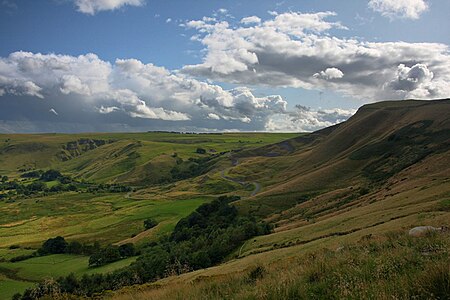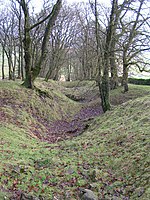Peak District

The Peak District is an upland area in England, at the southern end of the Pennines. Mostly in Derbyshire, it extends into Cheshire, Greater Manchester, Staffordshire, West Yorkshire and South Yorkshire. It is subdivided into the Dark Peak, moorland dominated by gritstone, and the White Peak, a limestone area with valleys and gorges. The Dark Peak forms an arc on the north, east and west of the district, and the White Peak covers central and southern areas. The highest point is Kinder Scout (2,087 ft (636 m)). Most of the area is within the Peak District National Park, a protected landscape designated in 1951.A 2021 report states that "the Park’s own population numbers around 40,000 and supports an estimated 18,000 jobs, predominantly through farming, manufacturing and, inevitably, tourism".The area has been inhabited since the Mesolithic era, and was largely agricultural until mining arose in the Middle Ages. During the Industrial Revolution several cotton mills were constructed in the area's valleys by Richard Arkwright. As mining declined, quarrying grew. Tourism came with the railways, spurred by the landscape, spa towns and Castleton's show caves.
Excerpt from the Wikipedia article Peak District (License: CC BY-SA 3.0, Authors, Images).Peak District
B6061, High Peak Peak Forest
Geographical coordinates (GPS) Address Nearby Places Show on map
Geographical coordinates (GPS)
| Latitude | Longitude |
|---|---|
| N 53.333333333333 ° | E -1.8333333333333 ° |
Address
B6061
SK17 8ES High Peak, Peak Forest
England, United Kingdom
Open on Google Maps










